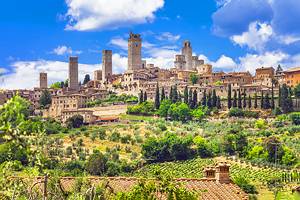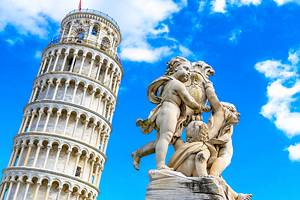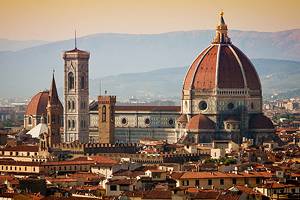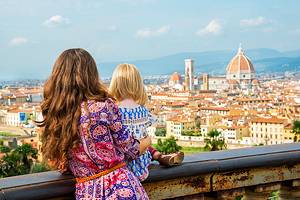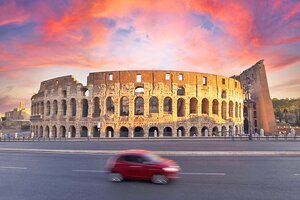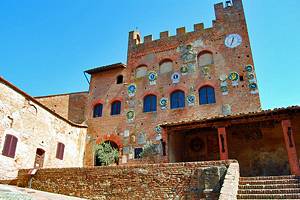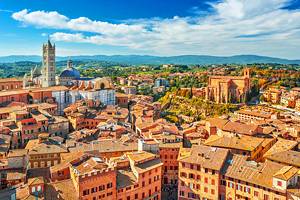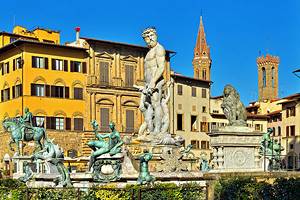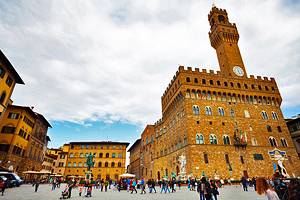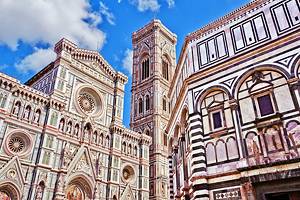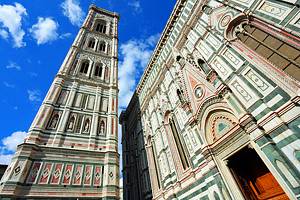Palaces in Florence: A Visitor's Guide
Florence's grand palaces (palazzi) were homes of its most powerful families during the Renaissance and into later centuries, and several of them serve today as galleries where the city's greatest art treasures are displayed. Some, like the Uffizi Gallery, show the paintings museum-style, while others follow the example of the Pitti Palace and hang them arranged as decorative pieces, in the way the families who lived in these rooms would have displayed them.
These palaces were designed and renovated by the greatest Florentine architects and decorated by the outstanding artists of their age. Today, they rank among the city's top tourist attractions, and you should see at least one of them on a visit to Florence. Learn more about these historic buildings with our list of the top palaces in Florence.
Palazzo Vecchio (Palazzo della Signoria)
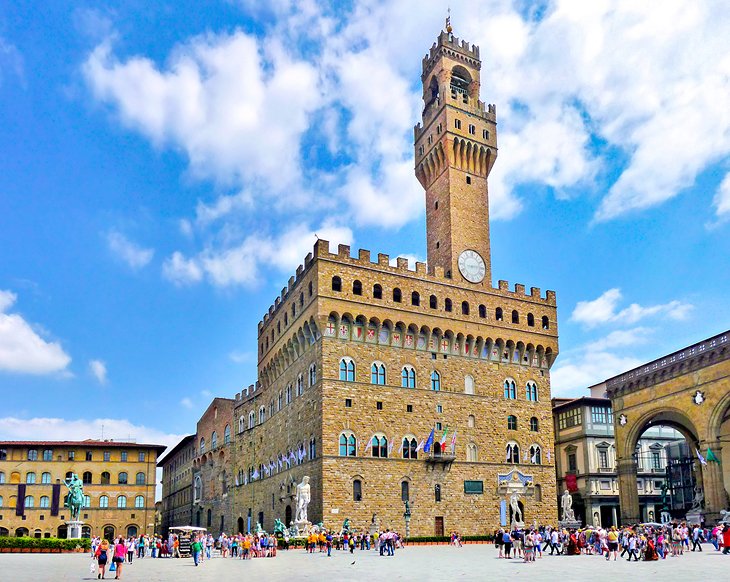
No other palace in Florence - and no other tourist attraction - gives you such a wide picture of the city's history. This splendid palace overlooking Piazza della Signoria was the center of power in Renaissance Florence, and even today houses the city offices.
It is also one of the oldest of the palaces, begun just as the 13th century was ending, when the Medicis were already the city's leading family. Its rooms are lavishly decorated and contain priceless Medici treasures and works of art by the greatest names in the Florentine Renaissance.
Palazzo Pitti (Pitti Palace)
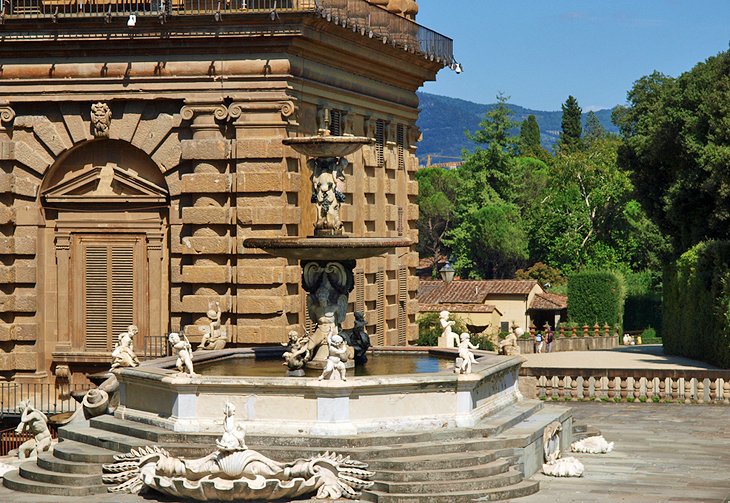
The largest of the Florentine palaces, the Pitti Palace is also one of the most creative in its architecture, with a façade of massive stone blocks, high-vaulted windows, and stepped-back stories. Unlike the others, it sits on the opposite side of the Arno River, known as the Oltrarno quarter.
Because of its setting outside the crowded medieval city, it had the luxury of space for 45 hectares of gardens spreading behind it. In addition to its furnished rooms, the Pitti Palace contains one of Italy's finest collections of Italian and other paintings.
Palazzo degli Uffizi (Uffizi Palace)
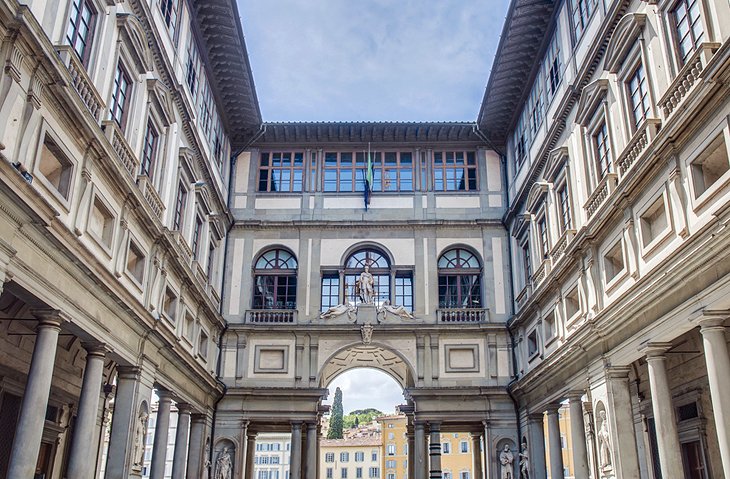
Although the Uffizi is known around the world as one of Europe's most important art museums, the galleries of this vast palace are prized not simply for their paintings, but also for the beautiful setting they provide. Around 1540, Cosimo I de' Medici, Duke of Florence, moved out of the family palace into the Palazzo Vecchio, making it the Palazzo Ducale (Ducal Palace).
This left no room for the city's law-courts and governing body, so plans were drawn up for offices of their own, the Uffizi. The foundation stone was laid in 1560, and building continued for decades, incorporating the old customs building and a Romanesque church.
Along with government offices, there were rooms for the study of natural sciences and alchemy, and later, a theater. The uniform facades conceal a variety of interiors, which arose from the mingling of buildings from three different centuries. This was also the first European building to use cement and iron reinforcements.
Because it is one of the most popular places to visit in Florence, lines are long and visits are timed. You can order timed tickets ahead or you can take a skip-the-line tour, which solves the line issue for both of these popular attractions and at the same time assures that you will see the most important works in each, with an expert guide explaining their significance.
Palazzo Medici-Riccardi
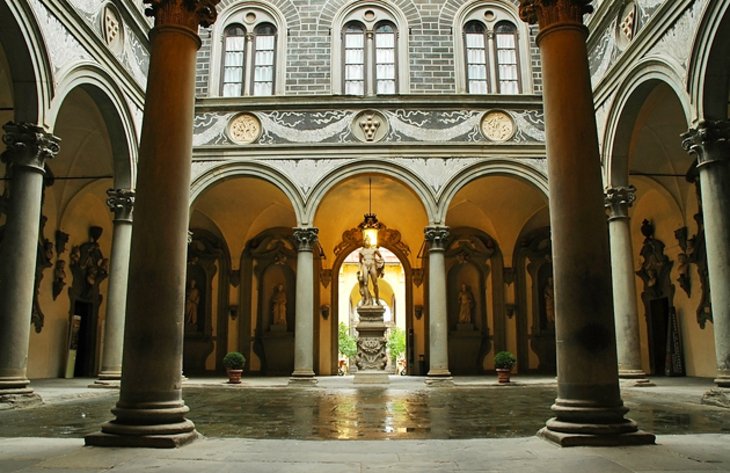
Although this early Medici palace is large and imposing, its lack of ostentation may surprise you if you've seen their later palaces. But the early dukes presided over a democratic-republican community and would never have chosen to behave like kings. The Medici princes lived and ruled here from its completion in 1464 until 1540, when Cosimo I moved into the Palazzo Vecchio. It was later enlarged by the Riccardi family.
An archway leads into the colonnaded courtyard, from which stairs lead up to the Palace Chapel. The wall frescoes, the Procession of the Magi to Bethlehem, by Benozzo Gozzoli, incorporate two historical events: the 1439 assembly of bishops in Florence and the 1459 visit of Pope Pius II. In these frescoes are portraits of some of the participants, including the Patriarch of Constantinople, pictured as the oldest of the Magi, and Lorenzo de' Medici shown as a boy on horseback. The well-preserved frescoes give a vivid picture of 15th-century Florence.
Not much of the Medici interior survived alterations by the Riccardi family, and the Medici Museum on the ground floor occupies one of the few original rooms. Of particular interest here is one of Filippo Lippi's most important works, Madonna and Child (1442). The Galleria di Luca Giordano holds that artist's important 1863 fresco The Apotheosis of the Medici Dynasty. The Galleria leads to the Biblioteca Riccardiana, a 50,000-volume library with a vaulted ceiling painted with frescoes by Luca Giordano
Address: Via Cavour 1 & 3
Official site: www.palazzo-medici.it
Bargello Palace
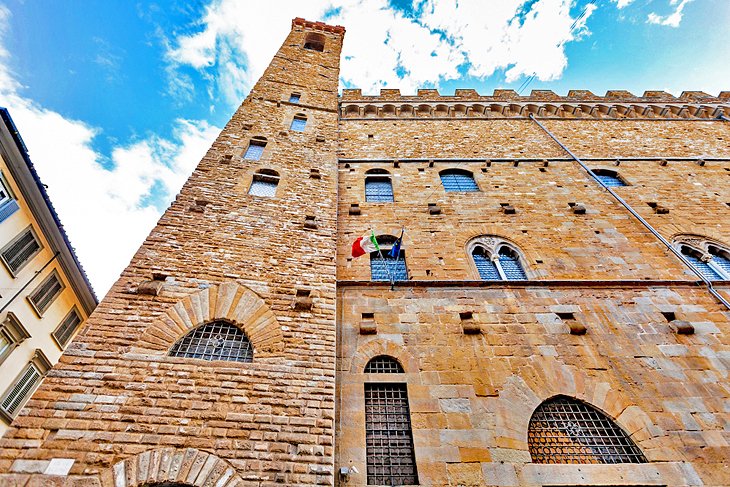
The sturdy tower and crenellated walls of the Bargello, the palace built by the citizens of Florence after their victory over the nobility in 1250, are best known today as the home of the National Museum (Museo Nazionale del Bargello). From 1261, it was the seat of the Podestà, the city's governing body; from 1502, the site of the ecclesiastical court and prison; and from 1574, the seat of the Bargello (chief constable). In 1859, Italy's first national museum outside the Vatican was installed in the palace.
The courtyard is worth admiring for its architecture alone, surrounded on three sides by an arcade with round arches, octagonal columns, and groin vaulting. On the fourth side, an open staircase leads to the upper floors. Pillars and walls are decorated with the coats of arms of the Podestà, the members of the Rota, and the quarters and boroughs of the city. In the center of the courtyard is an octagonal fountain.
Address: Via del Proconsolo 4, Florence
Palazzo dello Strozzino & Palazzo Strozzi
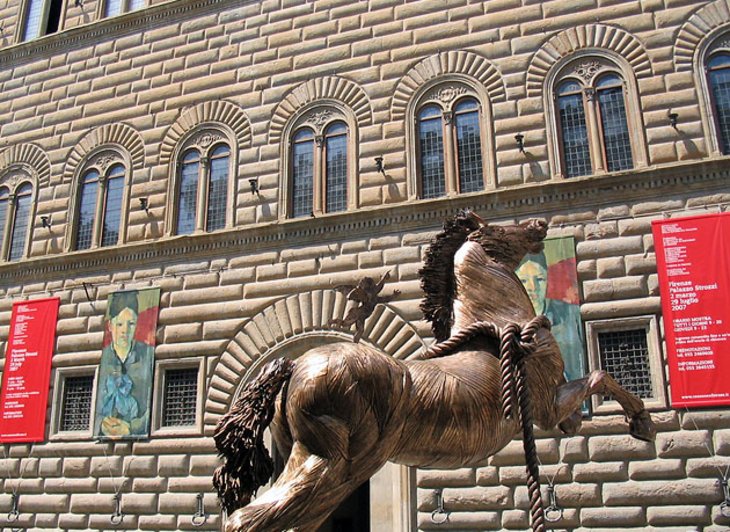
You may be confused by the two names, which refer to two different buildings standing opposite each other. Palazzo dello Strozzino, built by the younger line of the Strozzi family, is about a century older than Palazzo Strozzi. Unfortunately, not much of it is left except the outer walls, as its central courtyard was gutted to create the Odeon Theater.
The 16th-century Palazzo Strozzi, however, survives much intact. Like the Pitti Palace, it was built by a wealthy family trying to outdo the Medici, except that instead of trying to one-up with palatial size, the wealthy merchant Filippo Strozzi decided to excel with meticulously fine workmanship. And unlike the Pitti, the Strozzi had money enough to carry it off in style without bankrupting themselves.
As you might imagine, the Medici were not pleased, and at its completion, Cosimo I confiscated the palace, not returning it for 30 years. The Strozzi got the last laugh: it remained the seat of the Strozzi family until 1937, almost two centuries after the last Medici heir died. And it is considered Florence's finest Renaissance palace.
Stand back at a distance to appreciate Palazzo Strozzi's façade and the balanced composition of its stories, portal, windows, and cornice. The wrought-iron rings, torch-holders, and lanterns on the corners were forged by Florence's finest blacksmith, Niccolò Grosso. Be sure to see the elegant inner courtyard.
The gallery is used today for art exhibitions, and a little museum on the ground floor tells the history of the building and includes a wooden model of the palazzo by its architect, da Maiano.
Address: Piazza Strozzi, Florence
Official site: www.palazzostrozzi.org
Davanzati
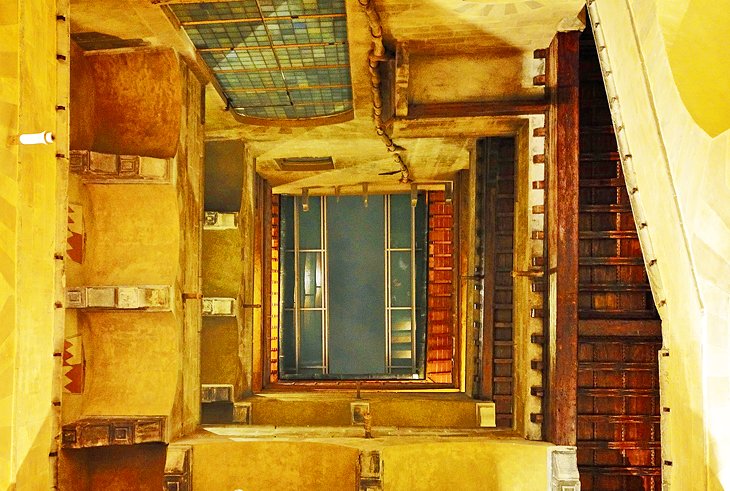
Completely different from the other palaces, and one of the most fascinating tourist attractions in Florence, Palazzo Davanzati is the townhouse of a prosperous medieval wool merchant's family. It was built in the mid-1300s by joining together several earlier tower houses, and although it is five stories tall, still narrow, and its rooms smaller, you can already see the transition from enclosed and vertical tower houses to the open spaciousness of Renaissance palaces with their central courtyards.
The most remarkable features are its painted interiors, restored to their original colors, especially the bedrooms, with colorful painting covering the walls and ceilings. Although most of the many period objects are not original to this house, they are appropriate to the times and give an unparalleled view of domestic life. You'll see everyday kitchen utensils, even bathroom fixtures, along with dishes, decorations, textiles, and a collection of fine lace.
These furnishings, which have come from the Museo Nazionale del Bargello and other collections, provide a glimpse of the highly-cultivated life of wealthy medieval Florentines, who furnished their houses with valuable works and were patrons of the arts just as their Renaissance descendants were.
Address: Via Porta Rossa 13, Florence
Villa La Petraia
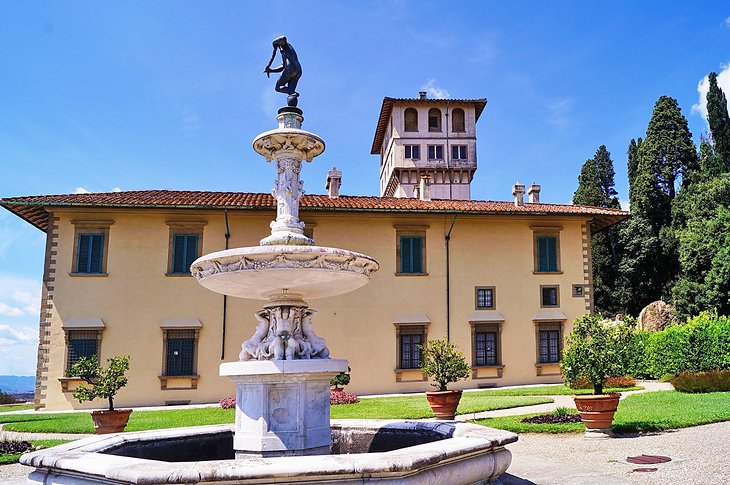
The Medici were not the first owners of the villa in the hills overlooking Florence, which had been built around a tower dating at least from the mid-1300s. But it was Cardinal Ferdinando Medici who transformed it from a country home to a ducal palace in 1587.
Subsequent owners - Leopold II of Lorraine and Italian King Vittorio Emanuele II and his wife - maintained and added their own touches to its grandeur. It's a shame that it's one of the least-known places to visit in Florence, because it is filled with treasures: two outstanding early 17th-century fresco cycles by Cosimo Daddi and Baldassarre Franceschini, and Giambologna's famous bronze of Venus-Fiorenza.
The villa is perhaps best known for its terraced park, considered one of the finest gardens in Italy. It's about a half-hour drive from central Florence, or a bus ride (route #2 or 28) from Santa Maria Novella station. The Villa is part of the Medici Villas UNESCO World Heritage Site and is one of the rare free things to do in Florence.
Address: Villa Petraia 40, Località Castello, Florence
Poggio a Caiano
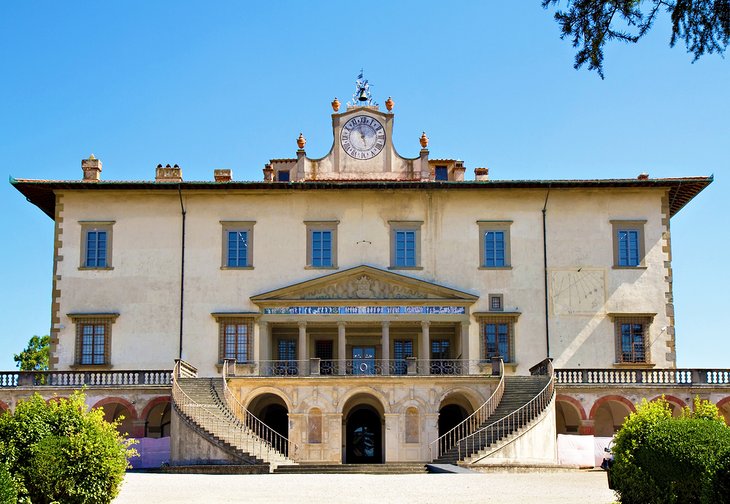
Like Villa La Petraia, Poggio a Caiano was built by the Medicis in the breezy hills outside Florence, a place to retreat from the city's summer heat. Lorenzo the Magnificent commissioned Giuliano da Sangallo to build Poggio a Caiano in 1485, and it embraces the newest Renaissance ideals in architecture.
These included a return to classical styles and designs that incorporate nature and the surrounding landscape. You can see the latter in the open loggia that runs along all four sides of the building, opening the villa to the outdoors.
This latter architectural creation explicitly reveals a new attitude towards nature. In fact, the loggia opens the building towards the outdoors, inviting the natural world to take a direct part in the architectural composition. Gardens and woods surround the villa, offering some fine viewpoints for admiring it.
The villa was unfinished at the time of Lorenzo's death, and the work was continued by his son, Pope Leo X, under whose direction the central hall was decorated with frescoes of rural scenes and classical references. Considered today the most splendid of these Medici summer palaces and one of the most interesting buildings from the early Renaissance, Poggio a Caiano was also Lorenzo's favorite residence.
Address: Piazza dei Medici 14, Poggio a Caiano, Italy
Palazzo Gondi
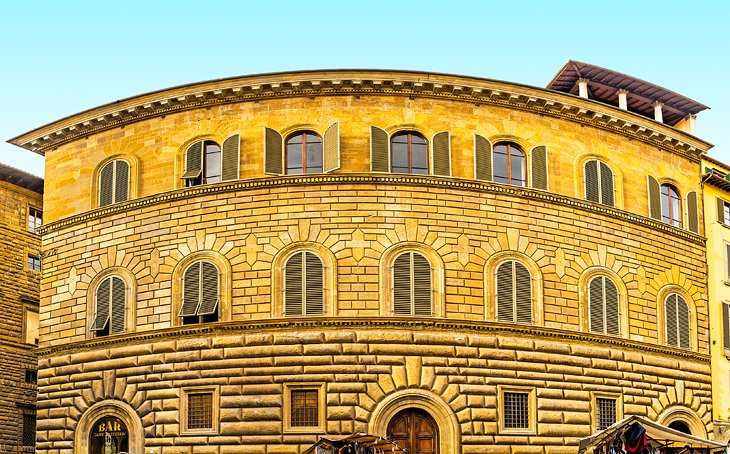
The prominent Gondi family, bankers who had made their fortunes in Naples, commissioned Giuliano da Sangallo to build them a palace commensurate with their position. He followed the styles popular in the late 1400s, designing a building whose four wings enclosed an inside cortile, or courtyard from which stairs connect its three stories.
The façade is similar to those of Palazzo Ricardi and Palazzo Strozzi, faced in ashlar whose form changed slightly with each floor. You can tour the palace to see its lavish painted ceilings and admire one of the best views of central Florence's towers and domes from its rooftop terrace.
Address: Piazza San Firenze 3, Florence
Map of Palaces in Florence: A Visitor's Guide
More Related Articles on PlanetWare.com
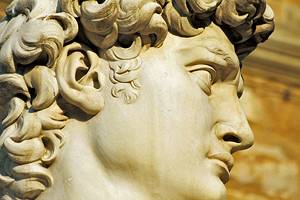
Discovering Florence: These palaces house some of the finest art treasures in the city's collections, but you can find other famous masterpieces with the help of our articles on exploring the museums in Florence and the top churches in Florence.
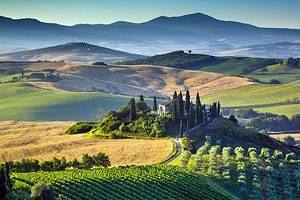
Exploring Further Afield: Florence is one of Italy's three most-visited cities and handily located near the center of the country, so from here, you can easily reach many of the tourist attractions in Italy. Or you can find plenty of things to see and do without traveling far, as you'll learn from our handy articles on Tuscany and day trips from Florence.




